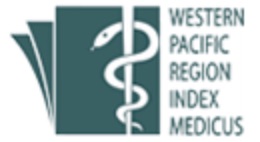Metal Release of Standard and Fake Orthodontic Braces: An In Vitro Study
DOI:
https://doi.org/10.31436/imjm.v20i2.1707Keywords:
Orthodontic bracket, Braces, Spectrometry, CorrosionAbstract
INTRODUCTION: The growing demand for orthodontic braces among Malaysians has led to the development of fake braces. These fake braces services are illegal and their brackets are reported to be of inferior quality. Fake braces are constantly being exposed to the saliva intraorally, hence they are susceptible to corrosion. This study was conducted to investigate the release of metal ions as a result of corrosion from standard and fake orthodontic braces immersed in artificial saliva of different pH. MATERIALS AND METHODS: A total of six different types of brackets (three from standard and three from fake braces) were immersed in containers containing 5 mL of artificial saliva of pH 4.9 and pH 7.8. The samples were collected for analysis on day 1, day 14, and day 28 using Inductively-Coupled Plasma Mass Spectrometry (ICPMS) to evaluate the amount of metal ion released. Statistical analysis was performed to isolate the significant difference of metal ions released between two types of braces in different pH solutions. RESULTS: The release of aluminum, nickel, chromium, manganese and copper were observed and analyzed. Fake braces released the highest concentration of chromium, manganese, and nickel ions in both artificial saliva as compared to standard braces. Brackets immersed in pH 4.9 released a higher number of ions compared to pH 7.8. CONCLUSION: This study showed that fake braces released the highest concentration of metal ions as compared to standard braces. Both time and pH influenced the release of metal ions from orthodontic brackets.
Downloads
Downloads
Published
How to Cite
Issue
Section
License
All material submitted for publication is assumed to be submitted exclusively to the IIUM Medical Journal Malaysia (IMJM) unless the contrary is stated. Manuscript decisions are based on a double-blinded peer review process. The Editor retains the right to determine the style and if necessary, edit and shorten any material accepted for publication.
IMJM retain copyright to all the articles published in the journal. All final ‘proof’ submissions must be accompanied by a completed Copyright Assignment Form, duly signed by all authors. The author(s) or copyright owner(s) irrevocably grant(s) to any third party, in advance and in perpetuity, the right to use, reproduce or disseminate the research article in its entirety or in part, in any format or medium, provided that no substantive errors are introduced in the process, proper attribution of authorship and correct citation details are given, and that the bibliographic details are not changed. If the article is reproduced or disseminated in part, this must be clearly and unequivocally indicated.










